We asked readers to submit photos of their writing spaces. The creative habitats captured in these images reflect each writer's unique approach to finding inspiration, motivation, and focus.
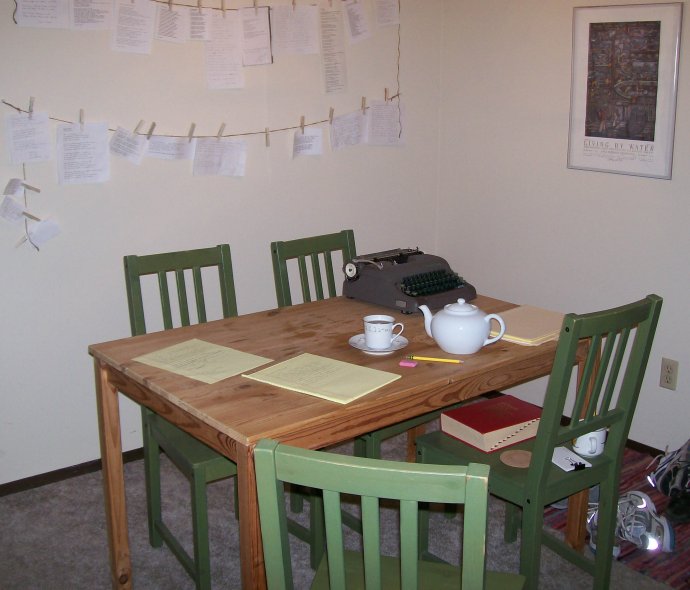
Poet Amy Groshek works at the dining room table of her one-bedroom apartment in Madison, Wisconsin. She uses the typewriter for drafting her poems, avoiding the potential distractions of the computer during early stages of writing.
"The scraps of paper on the wall are favorite poems that I have memorized or am in the process of memorizing," Groshek says.
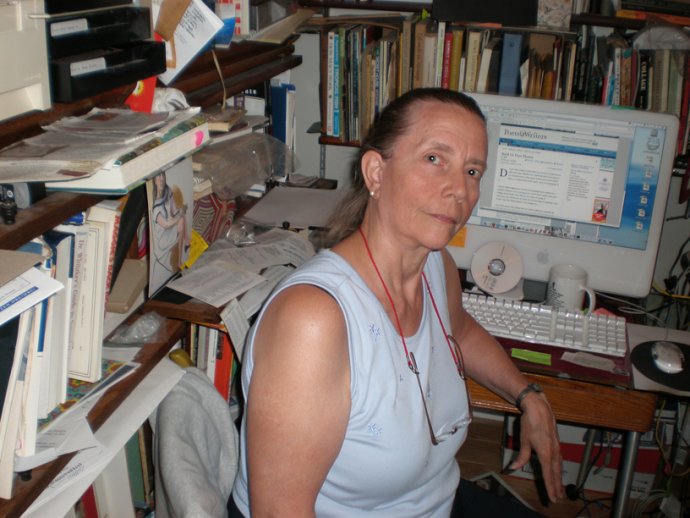
Poet Barbara Torode converted a small bedroom in her Philadelphia home into a writing den, where she works surrounded by favorite books and pieces of advice tacked to the walls and shelves. "There is a dark shade on the window to kill screen reflections and task lighting so the room can be dimmed," Torode says of the deliberate design of her space. "I'm in easy commuting distance to my kitchen—no wasted time going and coming for meals," Torode adds, noting that she can also escape to her garden "for necessary eye-resting breaks, exercise, and meditation."
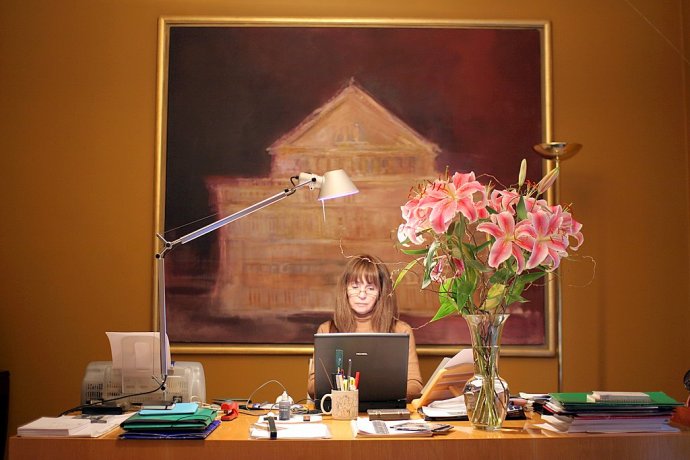
Poet Carmen Iriondo of Buenos Aires, Argentina, chose her writing space, originally her home's dining room, "for its silence and view: plants
and trees in spite of its urban location."
"The painting behind me is the Teatro Colón in Buenos Aires by Romulo
Macció, a known artist and a personal friend," says Iriondo. "As an ex–ballet dancer, that
theatre represents for me a mix of creation, beauty, difficulty, mischief,
sweat, and well being, and brings me good memories of my childhood."
"The desk on which I write and read and work and think was made by a carpenter who agreed to all my demands: size, drawers, height, and above all, color and texture of the wood," Iriondo adds. "The wood also smells great. It's my favorite object."
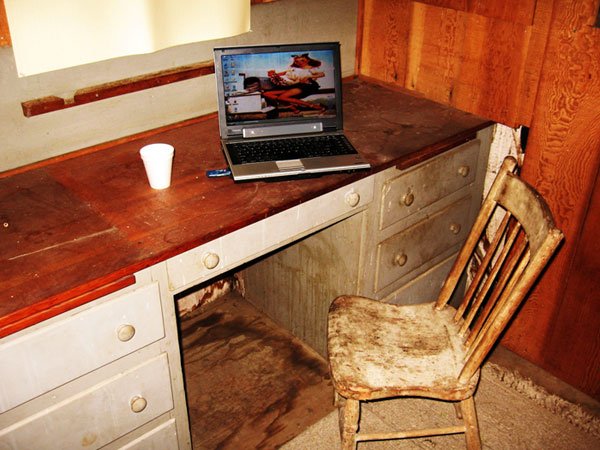
David Van Horsen of Monrovia, California, retreats to an outbuilding his family calls "the shed" to write essays and short stories. "The isolation of this space is integral," says Van Horsen. "Because I'm married, with twins, it can be hard to find a place to get the writing down. This is pretty much the darkest and dankest hole on the property. Nobody wants to be here. So it is perfect for uninterrupted thought."
"Sometimes I get thirsty so I have the simple styrofoam cup," Van Horsen says of his single desk accessory. "And when the words don't come, I can stay occupied by breaking it up into little pieces." As for the pin-up on the computer screen? "Too much isolation can be bad, so the Linda the Mail Lady background keeps me perky!"
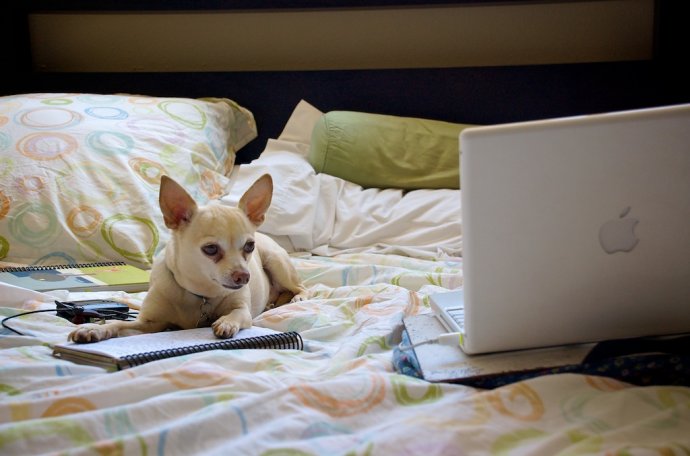
Fiction writer and essayist Debbie Zeitman, who also has a few screenplays in the works, writes in her bedroom in Venice, California. She uses a lap desk to hold her laptop and keeps a writing pad close at hand.
For Zeitman, writing isn’t always a solitary pursuit. Before taking this photo, she left her workspace for a moment and her industrious Chihuahua, Speck, stepped in. "I am still awaiting his critique," she says.
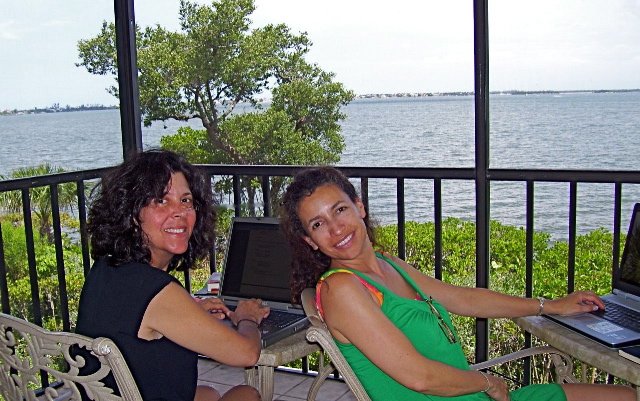
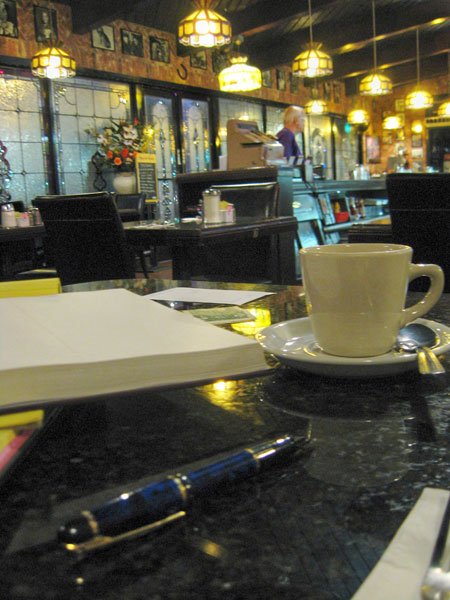
Sally Charette of Acton, California, travels to Andrew's Diner in North Hollywood, sitting at the same table every day to work on her novel, along with essays and articles.
"A cup of coffee and a warm greeting provide a powerful incentive for me to write before my day job begins," Charette says. "While writing is a famously solitary pursuit, there's a camaraderie amongst the staff and regular customers. We share the secret of early risers, that the hours before dawn can be especially productive. A diner is a great place to eavesdrop and keep in touch with the natural cadences of conversation—and to pick up story ideas."






